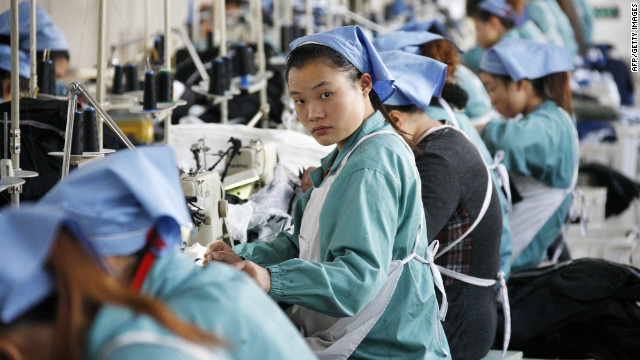|
Growing production surpluses resulting from the government's stimulus package and loose credit policies are constraining the rebound of industry and the economy, and may undermine their recovery.
Data from the Ministry of Industry and Information Technology (MIIT) show that current overcapacity in the steel industry has reached more than 100 million tons, with 20% growth of new projects this year. Cement production surpluses total nearly 300 million tons, and over 200 new production lines are under construction with new capacity of more than 200 million tons. The capacity utilization rate of the aluminum industry is only about 65% of its production capacity of 5.6 million tons and 2 million tons for alumina and electrolytic aluminum. In addition, industries such as shipbuilding, chemicals, and flat glass, among others, also face serious problems of excess production capacity, and projects in emerging industries such as solar, wind energy are duplicating each other.
Wang Minghui, chairman of Yunnan Baiyao Group, a manufacturer of Chinese traditional medicine, says that the financial crisis could have been an excellent opportunity for promoting structural adjustment and improving industrial concentration. Although the pharmaceutical industry is in a period of transition, adjustment has been insufficient and the transition will certainly be delayed.
Industrial adjustment that should have been left to the market is now once again in the hands of the government. The State Council is implementing a series of policies such as government-controlled market, credit, and land access, and environmental protection to enhance control of industries such as iron and steel, cement, plate glass, coal chemicals, polysilicon, and wind power equipment. MIIT and other ministries are drawing up policies on mergers, reorganization, and the elimination of laggard production capacity.
With the introduction of economic stimulus policies since the end of last year, the State Council has issued ten plans for industrial revitalization. A deeper government intervention is entering micro-areas, resulting in an unprecedented expansion of state-owned enterprises, exacerbating overcapacity.
As industrial restructuring is occurring across the whole country in response to the global recession, emerging industries such as new energy have caught more attention. Many local governments are developing them as key industries. However, too much dependence on an undiversified emerging field will bring new excess capacity in such technologies as wind and photovoltaic power generation.
Mastering core technology is key to the development for new energy industries. In the current situation, the least affected in the global photovoltaic industry are large upstream enterprises with core silicon purification technology, while middle and downstream manufacturers for solar cells and components are greatly hurt. Unfortunately, China is the world's largest downstream solar panel producer.
Before 2007, there were only three domestic firms producing polysilicon, with total output of less than 600 tons. By the first half of 2008, there were nearly 20 polysilicon companies with total capacity of over 50,000 tons, accounting for almost 90% of the world's production, and more polysilicon projects are under construction by local governments. |
|
The Global Financial Crisis Should Have Been Better for China, But...
Updated: 2009-8-31 Source: www.english.ctei.gov.cn

Recommended News
Photo Gallery
Most Popular



